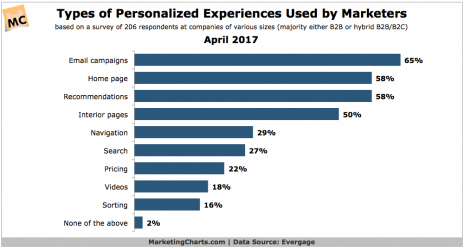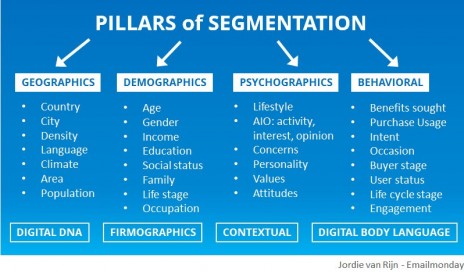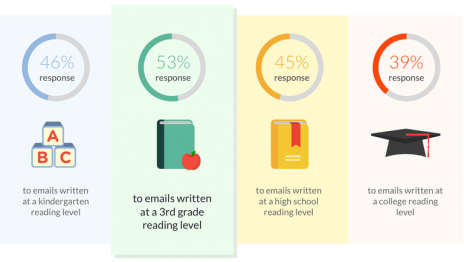
A well-written email is a great way to get your message out. It knows no language or geographical boundaries, and billions of people use and check email every single day – at home, at work, and on the go.
A well-written email that converts is worth its weight in bitcoin. It generates an average 4400% return on investment, or $44 for every $1 spent. No other channel or tactic can make that claim.
And here’s the best part: literally anyone can write emails that convert with a little practice. It’s not rocket science, nor is the know-how limited to a secret society of email gurus. Everything you need to craft a compelling message with a killer conversion rate is widely available if you go looking.
But you don’t even need to do that. I’ve collected the current best practices and tips for you below.
Ready to write emails that actually convert? Let’s dive in.
Targeted Segments
Before you write a single word, you need to have a) collected names and email addresses, and b) segmented your email list. While you’re at it, make sure you’ve cleaned out your inactive subscribers using good list hygiene to keep your email deliverability healthy.
Why? Because the days of ‘spray and pray’ email marketing – playing the numbers game by sending a blast campaign out to thousands – are long gone. Consumers expect relevant and personalized messaging.
Segments allow you to do that at scale. In fact, email campaigns are the most frequently-used tactic for creating a personalized experience.
Creating detailed buyer personas is the first step toward effective marketing. Using them to segment your email list should be the second. It leads to increased open, click, and conversion rates, higher revenue, better retention and relevance, and improves your overall deliverability.
Subject Lines That Grab Attention
Of course, that should be the right kind of attention. All-caps, spelling mistakes, and emoji overuse scream ‘SPAM!” and will get you deleted PDQ if you happen to make it past the inbox filters.
The subject line is your digital calling card. Nearly half (47%) of recipients decide whether to open an email – while 69% report a message as spam – based on the subject line alone. Make it count.
- Subject lines with the recipient’s name are much more likely to be opened
- Unless your brand is immediately recognizable, use your actual name in the from: field
- Be clear, not clever, but keep a little mystery or intrigue to entice them to open
- Frequently test them to optimize your open rate … if it doesn’t get opened, nothing else matters
The subject line is perhaps the most important part of it all.
Preview Text That Ups the Ante
Most modern email platforms show more than just the subject line in the preview panel. It’s not unusual to see the first line or two of the email itself.
You can use that to your advantage. The preview text is another chance to sell them on opening. Treat it as either a second subject line, or an extension of it. If your subject line is a bit vague, clarify in the preview text. Use the preview line to pique their curiosity. Test it as frequently as you do the subject line.
Get the open.
A Body That Convinces and Converts
The message itself should be working towards one and only one goal: the conversion. That might be to click, download, subscribe, play, agree, or whatever else you decide. Be persuasive, not pushy.
Keep your message relatively short – 50 to 125 words seems to be the sweet spot – and to the point. Skip the big intro and instead focus immediately on the value or benefit to them. Be genuine, sincere, and authentic.
What’s your value prop, and why should they care?
Beyond that, remember:
- Emails that contain 1-3 questions have the highest response rate.
- Messages that are either slightly positive or negative generate more engagement than those that are neutral. Likewise for objective rather than subjective email.
- Write in the first and second person, using words like I, me, we, you, and your to connect with your reader.
- Don’t be afraid to use a little humor when appropriate.
Use a little psychology to increase the strength of your persuasion: the fear-of-missing-out, or Robert Cialdini’s six principles of persuasion, can supercharge your messaging and skyrocket conversion rates.
Get Visual With It
Emails with some sort of graphic – image, illustration, chart, graph, gif, or otherwise – see an uptick in both open and click-through rates.
Video specifically can increase your click-through rate by up to 300%.
A quick hack is to indicate in your subject line if the message includes a video, infographic, or other visual element.
A Killer Call-to-Action
One email. One CTA. No more, no less.
You want your readers to do something, right? So ask them to do it. Explicitly. Be clear about what’s in it for them. Use first person in your call-to-action copy.
And test everything: button vs. link, placement, color, copy, size, font. Test, monitor, and optimize for the best CTA possible.
Think of it this way: if a reader saw only the CTA, would they still understand what they’re getting? If the answer is ‘no’, it needs improvement.
If At First You Don’t Succeed …
Try, try again. The follow-up email is essential. Studies show that 70% of email campaigns stop after one without getting a response.
But those same studies reveal that you continue getting responses with each subsequent follow-up.
What kind of response? Try 21% for the second email, 14% for the fourth, 11% for the sixth, and even 7% for the tenth.
Don’t just resend the same message, though. A proper follow-up email adds context, acknowledges previous messages, ups the value, and adjusts the call-to-action accordingly.
If you’re not following up, adding it to your email efforts can single-handedly boost your conversion rate without doing anything else. So do it.
Crafting a killer email that converts is within reach for anyone who follows the advice here. No secrets. No gimmicks.
Now, go forth and convert.









